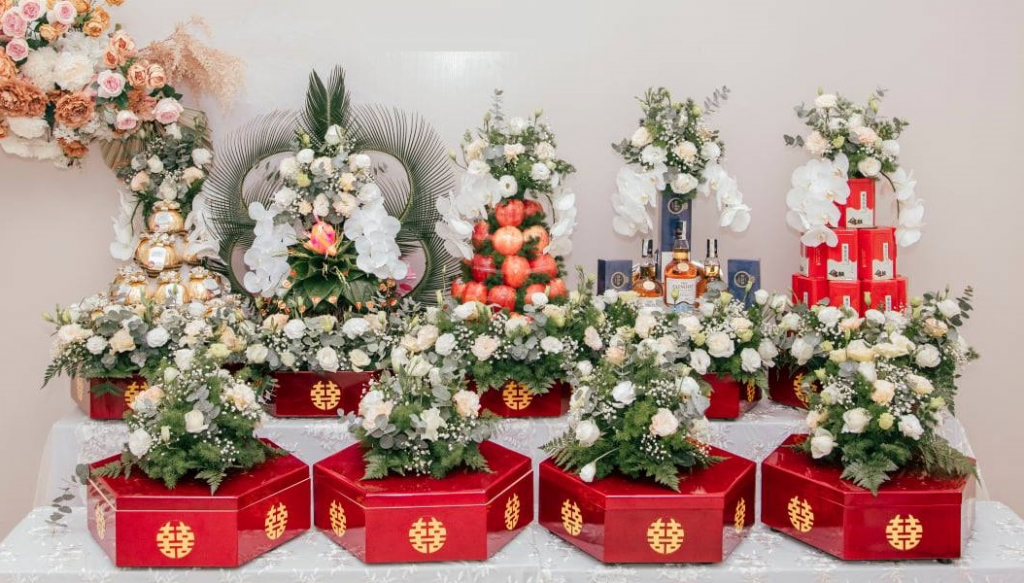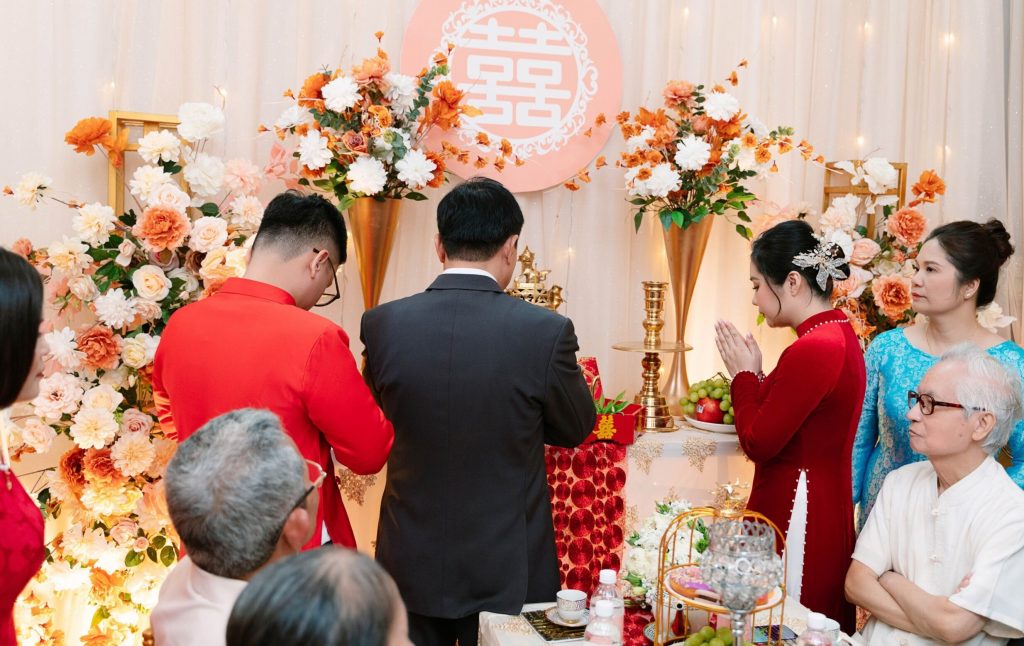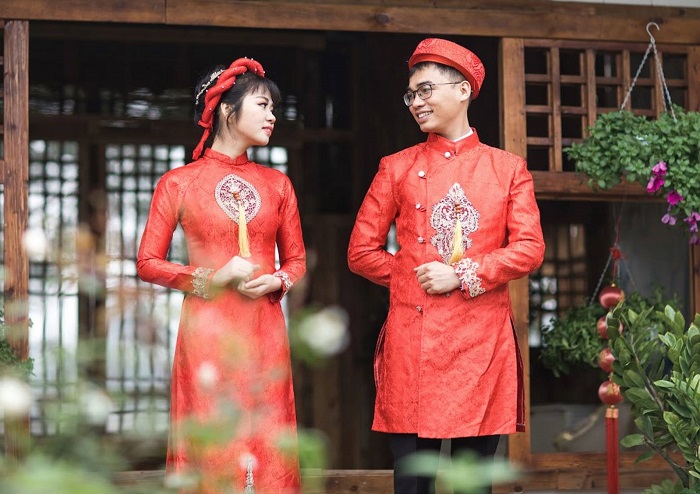From betel nuts to bridal gowns – how Vietnamese weddings have evolved through the generations
In Vietnam, weddings aren’t just a personal celebration — they’re a cultural ritual, a family reunion, and a community affair rolled into one. Rooted in ancient Confucian values, Vietnamese wedding customs were once formal, multilayered processes involving matchmakers, symbolic gifts, and deeply meaningful rituals. Today, while many of those customs remain, they’ve been reshaped by modern life, Western influences, and the changing role of family and gender.
So how have Vietnamese weddings changed over time? What traditions have stood strong, and which have evolved or faded away?
Let’s take a heartfelt journey through Vietnamese wedding customs — then and now.
1. Matchmaking and Proposal Ceremony (Lễ Dạm Ngõ)
Then: Family-First Decisions

Traditionally, marriages in Vietnam were arranged by the families, especially in rural areas. The dạm ngõ ceremony (literally “knocking at the door”) was the very first step in the process. The groom’s family would visit the bride’s home to formally express their interest in a union. This was not a romantic occasion — rather, it was a serious discussion between the parents, involving dates, zodiac compatibility, and family backgrounds.
Gifts often included betel leaves and areca nuts, which symbolize love and fidelity in Vietnamese culture. A well-conducted dạm ngõ reflected the groom’s respect and sincerity.
Now: Love Comes First
While arranged marriages are mostly a thing of the past, the dạm ngõ ceremony still happens — but it’s more symbolic now. The couple, often already engaged or cohabiting, includes this ritual as a respectful nod to tradition. The meeting is friendlier and more casual, with tea, fruit, and light discussion about wedding plans.
2. Engagement Ceremony (Lễ Ăn Hỏi)
Then: A Community Affair with Red Trays

The lễ ăn hỏi (engagement ceremony) was grand, involving multiple gift-bearing men from the groom’s side forming a procession to the bride’s house. They carried mâm quả — red-lacquered trays wrapped in silk — filled with symbolic gifts: tea, wine, cakes, fruits, areca nuts, and even a roast pig.
Each item had meaning: tea symbolized respect, bánh phu thê (husband-wife cake) represented fidelity, and wine stood for union. The bride’s family would accept the gifts, formally approve the marriage, and set a wedding date.
Now: More Stylish, Still Symbolic

This tradition still thrives, but with a modern twist. The mâm quả trays are now curated and often rented from wedding planners, arranged with aesthetic flair and Instagram-worthy design. The number of trays has also decreased (from 9–11 to just 5–7), and the ceremony is usually shorter.
Grooms and groomsmen often wear áo dài or suits, while brides and bridesmaids coordinate outfits in traditional or contemporary styles. The event is filmed, photographed, and shared on social media, turning it into both a cultural tribute and a digital memory.
3. Wedding Attire
Then: Traditional Áo Dài and Headpieces

The bride traditionally wore a red áo dài — a long, fitted tunic with flowing pants — symbolizing good luck and prosperity. Her outfit was often embroidered with gold thread and paired with a khăn đóng, a circular headdress.
Grooms also wore an áo dài, usually in blue or black, with similar embroidery.
Now: East Meets West
Today, brides often change outfits two or even three times during the wedding day. Most still wear a red or pink áo dài for the traditional ceremonies, but switch to a white Western-style gown for the reception. Some even add a third modern party dress for the evening celebration.
Grooms typically wear suits or tuxedos, although many still don áo dài for part of the day. Fashion has become a blend of tradition and trend, often with a stylist and makeup artist involved in every look.
4. Wedding Ceremony (Lễ Cưới)
Then: At the Bride’s Home
Traditionally, the wedding day began with the groom’s family bringing the bride home in a procession — often accompanied by gongs, drums, and loud announcements. The bride was led into her family’s ancestral altar room, where both sides offered incense and performed a solemn ancestor worship ceremony.

The groom would then “receive” the bride, and they would depart together to begin their life in the groom’s household. Most weddings were held at home, with hundreds of relatives and neighbors joining in a feast that could last all day.
Now: At Hotels and Wedding Halls
While ancestor rituals still occur — especially among traditional families — the main wedding celebration today usually takes place in a hotel or wedding center. It begins with a civil ceremony, followed by a party-style reception with music, performances, and a multi-course dinner.
Modern weddings may include personalized vows, love story videos, and grand entrances with fog machines and LED backdrops. Guests are seated according to RSVP, and the timeline is tightly scheduled. But despite the glitz, many couples still light incense and perform a symbolic altar ceremony with their parents before or after the public event.
5. Wedding Reception and Food
Then: Backyard Feasts with Local Dishes
Vietnamese weddings used to be “all hands on deck” affairs, with family, neighbors, and friends cooking together for days. Dishes included boiled chicken, sticky rice, spring rolls, pork belly, and vegetable soup. Everyone ate at long communal tables under tents.
It was noisy, crowded, and full of laughter.
Now: Banquets with a Blend
In urban areas, receptions are now catered affairs held in air-conditioned banquet halls. The menus still include traditional items — such as salad, steamed shrimp, fish in sauce — but are increasingly mixed with Western dishes like beef steak, desserts, and even wine or champagne toasts.
Music ranges from romantic Vietnamese ballads to modern pop, and it’s not uncommon to have a live band or even a DJ.
6. Gift-Giving and Red Envelopes
Then and Now: Gold, Livestock, and Red Envelopes
In the past, wedding gifts included practical items — rice, chickens, money, and even gold jewelry, especially from parents and elders. These gifts helped the new couple start their life together.
Guests brought lì xì (red envelopes) with cash, usually based on closeness to the couple.
Gold is still gifted during the engagement or wedding day by parents, often symbolized in the form of necklaces, bracelets, or even 24K gold leaf artwork.
7. Family Roles and Expectations
Then: The Bride Moves In
Traditionally, the bride moved in with the groom’s family, often taking on responsibilities like cooking and caregiving. Marriage was seen as a union between two families, not just two individuals.
In some regions, weddings lasted for several days, with formal dinners and rituals at both homes.
Now: Couples Seek Independence
Today, most modern couples — especially in cities — live independently or abroad. The emphasis is now on mutual partnership and emotional connection, not just duty and family ties. Still, many parents expect certain formalities to be respected, especially by the bride.
Balancing traditional expectations with modern values can be a challenge — but also a beautiful negotiation between generations.
8. Social Media and Global Influence
Weddings in the 2020s are digital events. Couples livestream ceremonies for relatives abroad, post teaser reels on Instagram, and hashtag their love stories. Destination weddings, cross-cultural unions, and minimalist elopements are also on the rise.
At the same time, there’s a growing return to roots — couples seek out traditional áo dài designs, organize tea ceremonies, and preserve ancestral rituals in creative, modern ways.
Vietnamese weddings, with all their symbolism, color, and joy, are a mirror of the society itself — a culture rooted in tradition, but always evolving. What remains constant is the essence: family, respect, love, and the coming together of two lives.
Whether you’re attending a wedding in a humble village or a five-star hotel in Hanoi, the spirit of Vietnamese celebration shines through — full of sincerity, laughter, and deep cultural pride.

